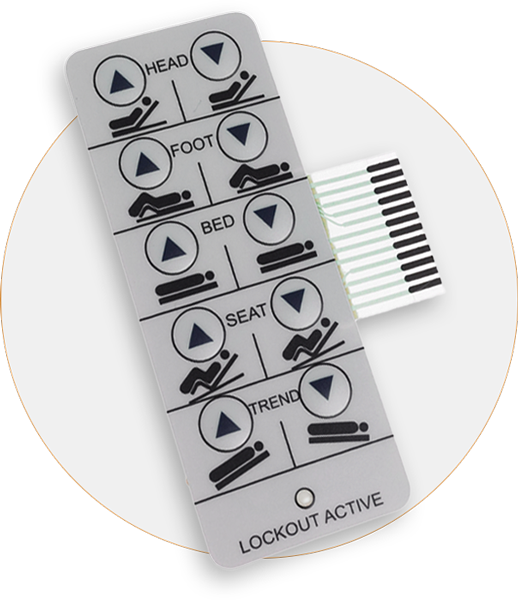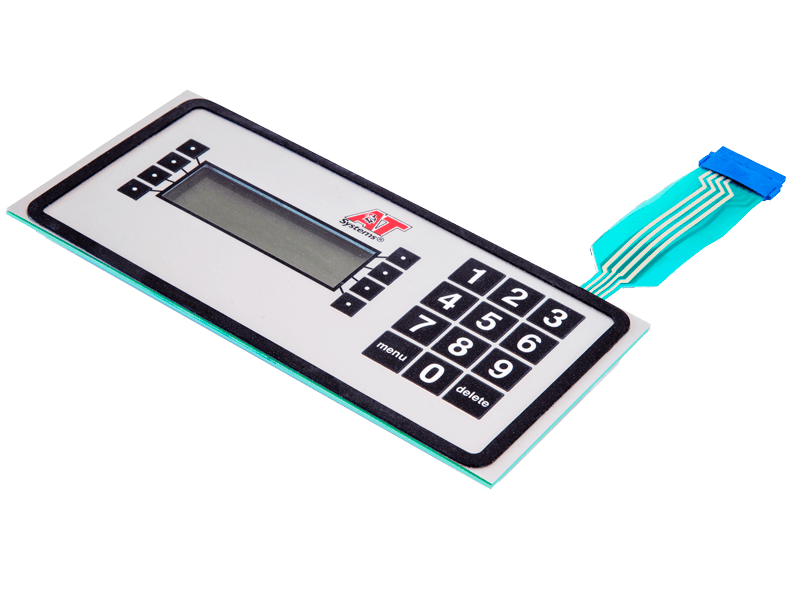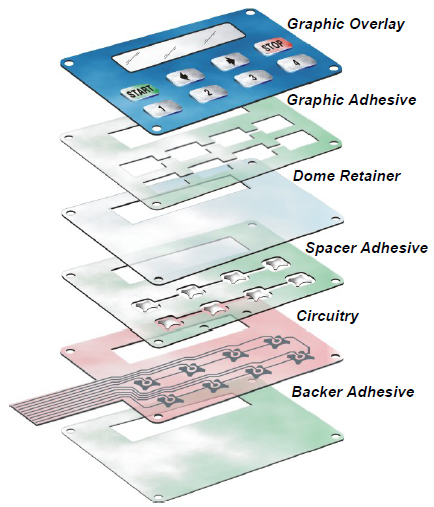All Concerning Membrane Switch: Comprehending Its Style and Capability
When you think regarding the control user interfaces in modern devices, membrane layer switches commonly come to mind. Allow's discover what collections membrane layer switches apart from various other control systems.
What Are Membrane Layer Switches?

Membrane layer buttons can also be personalized pertaining to shape, size, and graphics, enabling suppliers to develop one-of-a-kind user interfaces customized to specific items. Generally, membrane buttons play a significant function in boosting user experience throughout a vast array of applications.
Exactly How Membrane Layer Changes Work
When you push a trick on a membrane layer button, it turns on an uncomplicated yet efficient system. The leading layer, frequently constructed from flexible product, pushes down onto a conductive layer under it. This activity bridges the void in between conductive traces, finishing an electric circuit. As soon as the circuit closes, it sends out a signal to the device's controller, which translates your input.
You'll discover that the tactile feedback differs based on the switch design, offering either a soft click or an extra pronounced reaction. When you release the key, the membrane go back to its initial placement, resuming the circuit and quiting the signal. This process takes place practically instantly, making sure a receptive individual experience.
Membrane layer switches are prominent because of their sturdiness and resistance to dirt and dampness, making them perfect for numerous applications, from family home appliances to clinical tools. Recognizing this operation assists you value their prevalent usage.
Key Components of Membrane Switches
Comprehending the crucial components of membrane switches is fundamental for realizing their functionality and design. The protective layer guards versus ecological variables and wear, extending the button's life-span. By understanding these elements, you'll get insight into how membrane layer changes operate and their significance in different applications.
Materials Made Use Of in Membrane Layer Change Style
The performance and toughness of membrane switches heavily depend upon the materials utilized in their design. You generally experience polyester and polycarbonate as primary substrates as a result of their exceptional strength and versatility. These materials withstand scratches and chemicals, making them excellent for requiring environments.
The conductive layers commonly use silver or carbon, picked for their dependability and conductivity. membrane switch manufacturer. Silver gives premium efficiency, while carbon is a cost-efficient alternative. For the overlay, you might consider a matte or shiny surface, relying on your aesthetic requirements and individual experience
Make certain to choose adhesives that stand up to ecological aspects like temperature and humidity. Choosing the right materials will certainly guarantee your membrane switch stands the test of time.
Layout Factors To Consider for Membrane Buttons
While developing membrane layer switches, it's essential to take right into account different factors that affect their performance and user experience. Start by concentrating on the design and switch size; make certain they're intuitive and easy to navigate.
Verify your style fits ecological aspects, like wetness or temperature variants, which might impact performance. By carefully taking into consideration these elements, you'll create a membrane layer button that improves functionality and satisfaction.
Applications of Membrane Layer Switches
Membrane switches are versatile parts discovered in various applications, from commercial tools to customer electronics. You'll see their influence in makers that call for sturdy user interfaces and in devices that gain from smooth styles. Understanding these applications aids you value the capability and usefulness of membrane switches in day-to-day innovation.
Industrial Devices Use
When you're looking to improve the functionality of industrial tools, membrane switches use a trustworthy service that incorporates toughness with user-friendly style. These switches are ideal for harsh environments, supplying resistance to dirt, dampness, and chemicals. Accept membrane layer buttons to simplify your procedures and improve overall performance.
Consumer Electronics Assimilation
In the domain of customer electronics, membrane layer buttons play a crucial function in enhancing user interaction and device performance. Membrane layer switches also ensure durability and resistance to dirt and wetness, expanding the life expectancy of your electronics. By selecting membrane layer switches, you enhance not simply the functionality but also the style of your gadgets, making daily interactions smooth and delightful.
Advantages and Negative Aspects of Membrane Buttons
While membrane buttons provide a variety of benefits, they additionally include some downsides that you ought to take into consideration. One substantial benefit is their small style, making them excellent for space-constrained applications. They're additionally cost-effective, supplying a durable service with a low production price. Additionally, their smooth surface area is simple to tidy, improving hygiene in settings like hospitals.

Nonetheless, there are downsides. Membrane switches can have a shorter lifespan compared to mechanical switches, particularly under heavy use. They can additionally be much less responsive, which may impact individual comments during operation. If damaged, fixing them can be difficult and frequently needs complete replacement. Ultimately, their level of sensitivity to severe temperature levels and ecological conditions may restrict their performance in certain setups. Stabilizing these pros and cons will certainly help you figure out if membrane switches are the best fit for your job.
Frequently Asked Inquiries
For How Long Do Membrane Changes Usually Last?
Membrane layer switches over usually last between 5 to why not check here 10 years, depending on usage and environmental problems. You'll wish to assess variables like wear, exposure to moisture, check these guys out and temperature level fluctuations to determine their long life properly.
Can Membrane Layer Switches Over Be Customized for Certain Styles?
Yes, you can customize membrane switches to fit certain designs (membrane switch manufacturer). You'll have the flexibility to pick shades, shapes, and designs that match your job's requirements, ensuring they mix effortlessly with your general aesthetic
What Is the Expense Array for Membrane Layer Switch Manufacturing?
The price range for membrane layer button production usually drops in between $1 and $10 each, relying on factors like style intricacy, amount, and products. You can get quotes from manufacturers to discover the very best alternative.

Are Membrane Switches Over Waterproof or Immune?
Membrane layer switches can be made to be waterproof or resistant, relying on materials used and building techniques. If you need them for wet environments, ensure you specify those demands throughout the style procedure.
How Do Membrane Layer Changes Contrast to Standard Buttons?
Membrane layer switches are normally thinner and a lot more adaptable than standard look these up buttons, providing a smooth design. They're often easier to clean and integrate, yet could not give the tactile feedback you're used to with mechanical options.
Conclusion

Comments on “When special application needs arise, a specialized membrane switch manufacturer is the best choice.”